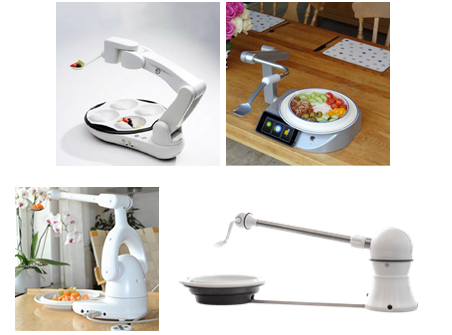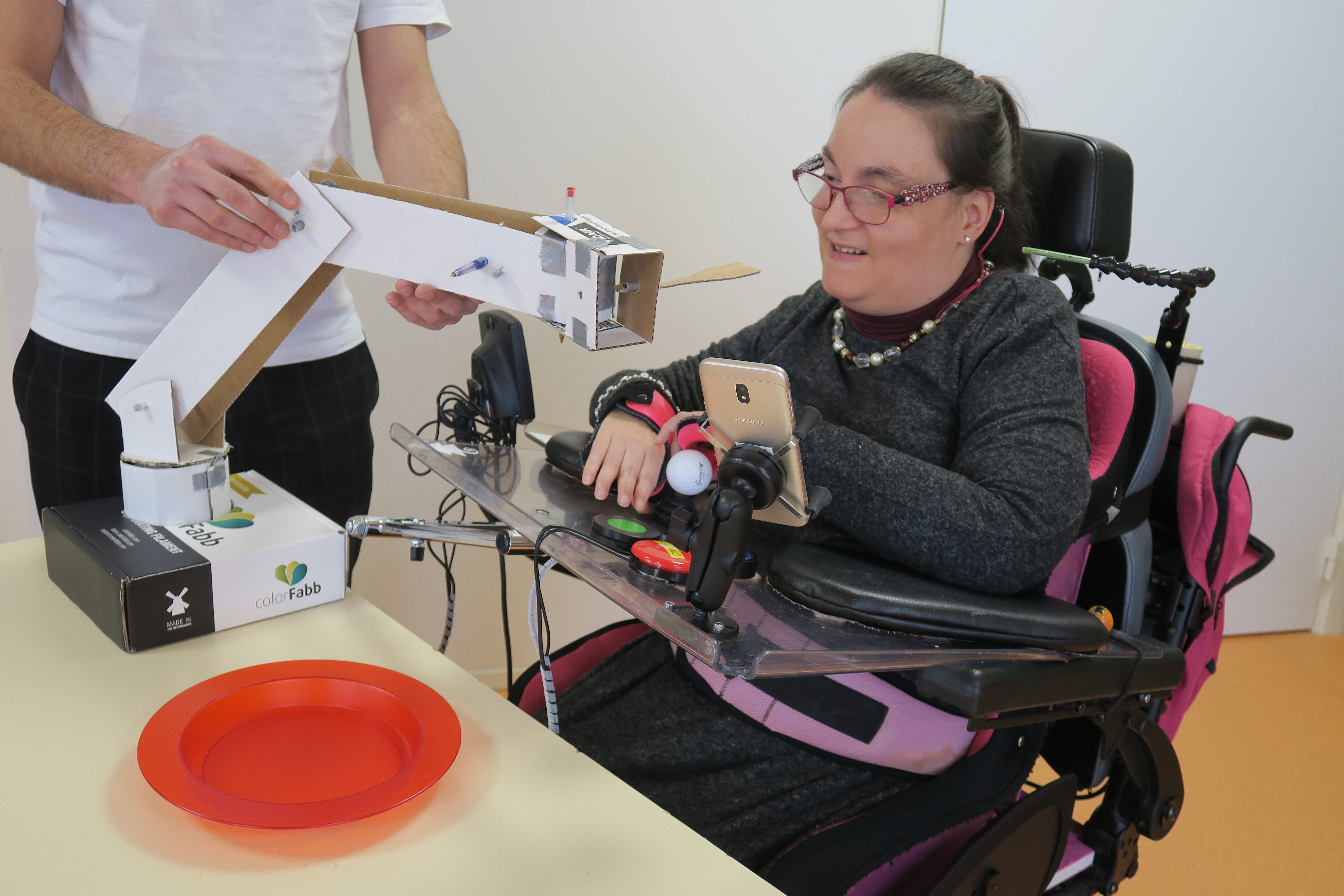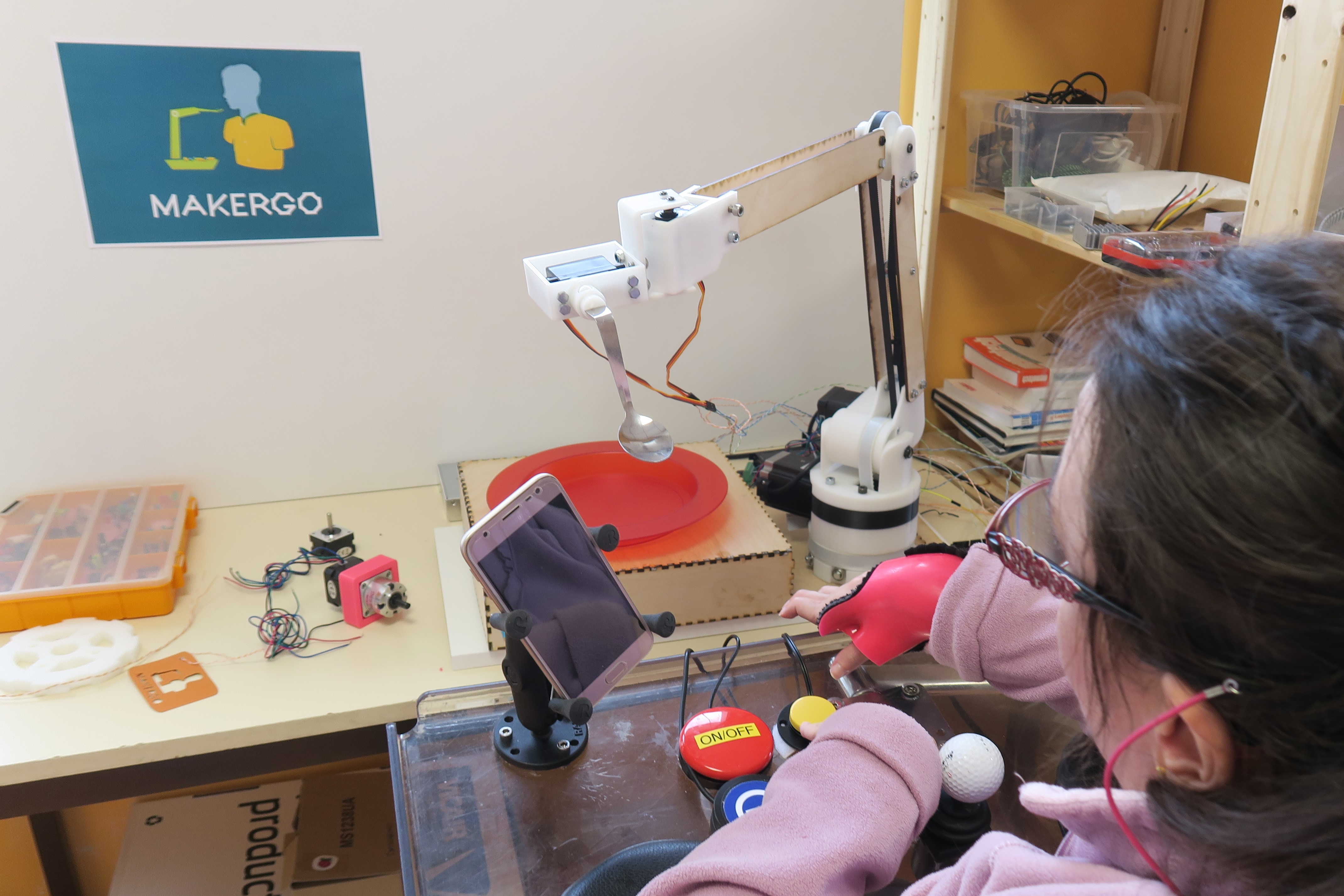Based on previous work from hackathon team and CAD model designed. In December 2018, Georges Tawil, biomedical engineering student, joined the project as an intern. His mission was making a first prototype in 3 months for that we had planned to:
- Review user’s needs and others specifications
- Make a benchmark, reviewing all the device on the market, patents and scientific paper on the subject
- Compare different solutions
- Design a prototype

Specifications
His work started by reviewing device specifications with the occupational therapist, personal care assistants and users, we figure out interesting points:
- From user and environment, the device shall not be overcrowding, noisy that can disturb the moment. Then the reached point of spoon shall be far from the table, in fact, users are mostly on a wheelchair which is big and cannot go under the table. These factors extend distance between the plate and the mouth.
- That device is a technical aid and can be considered as medical device as others devices on the market. In Europe and North America, there are regulation for those kind of device
- Accessibility which is financial first, based low cost manufacturing process for few units and built with standard components
These new specifications lead us to change the first solution designed during the hackathon that one judged overcrowded to be on the table.
Benchmark
Then, we had searched what are available on the market adaptive fork, spoon, mechanical device and robotic device. These devices are different and are prescribed for different disabilities. When this is not accessible, a personal care assistant is required to help people with upper disabilities to have lunch. If we look furthermore on robotic device there is 4 devices on the market: Obi®, Neater Eater® Electric, Bestic® and iEat®. All are sold more than 6500 euros.
- Obi® is a 6-axis robotic arm with rotational 4 compartments plate
- Neater Eater® Electric is planar robotic arm of 3 axis with rotational plate
- Bestic® is a 4-axis robotic arm
- iEat® is a 3-axis robotic arm with rotational plate
Each one of those solutions has advantages and drawbacks

Comparing solutions
We thought about 3 solutions:
- Device which can move the spoon in a plane with 2 axis combine with a rotating plate like the neater eater or the solution proposed in the Hackathon.
- Device which looks like a crane combine also with a rotating plate similar iEat
- Device which looks like robotic arm with 4 to 6 axis such as Bestic or Obi
Regarding specification and devices available on the market, we chose a 5-axis robotic arm as solution, 3 joints to reach positions and 2 joints to give spoon orientation. And we made quickly a prototype out of cardboard to validate the solution.
Prototype Designing
We started thinking which manufacturing process can we use and to build part inspired by frugal innovation. Of course, we thought to use 3D printing for most of the part but for large part and structural part which shall able to support load, 3D printing is not efficiency. We include the possibility to make part by using laser cutting or CNC machine.

We allow us to use standard components like bearings, screws from handicap and 3D printer which are widely available on the internet or DIY stores. By thinking first of the manufacturing process possibility, we expect to reduce manufacturing cost and be sure that it is possible for anyone to make his own easily at home.

We were using cheap stepper motor controlled in open loop without encoder. This first prototype (see project page) costs around 300 euros, it is a Proof of Concept.

To conclude, based on 3D printing and laser cutting part, stepper motor, Arduino we had built a first prototype. That one is a proof of concept and it’s functional, it can be use but we didn’t consider security issues. As we said before, its base on stepper motor which are controlled on open-loop on 3 of 5 joints, there is no feedback on the position or applied torque. With that kind of actuators, we cannot add security features to detect collisions, for example between the arm and the environment or the user. This solution is really cheap and functional but using security is not guaranteed.
 Julien OUDIN
Julien OUDIN
Discussions
Become a Hackaday.io Member
Create an account to leave a comment. Already have an account? Log In.